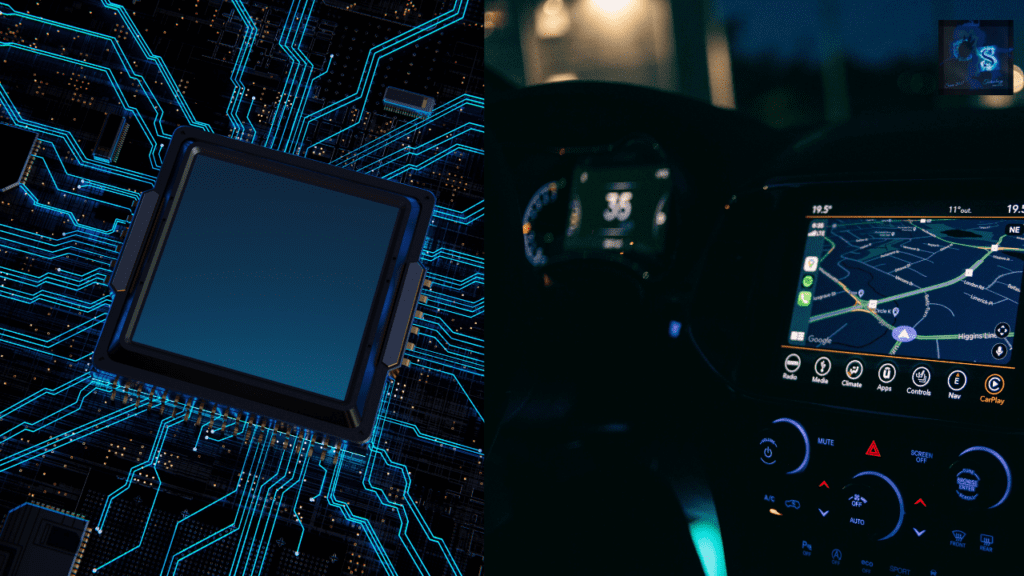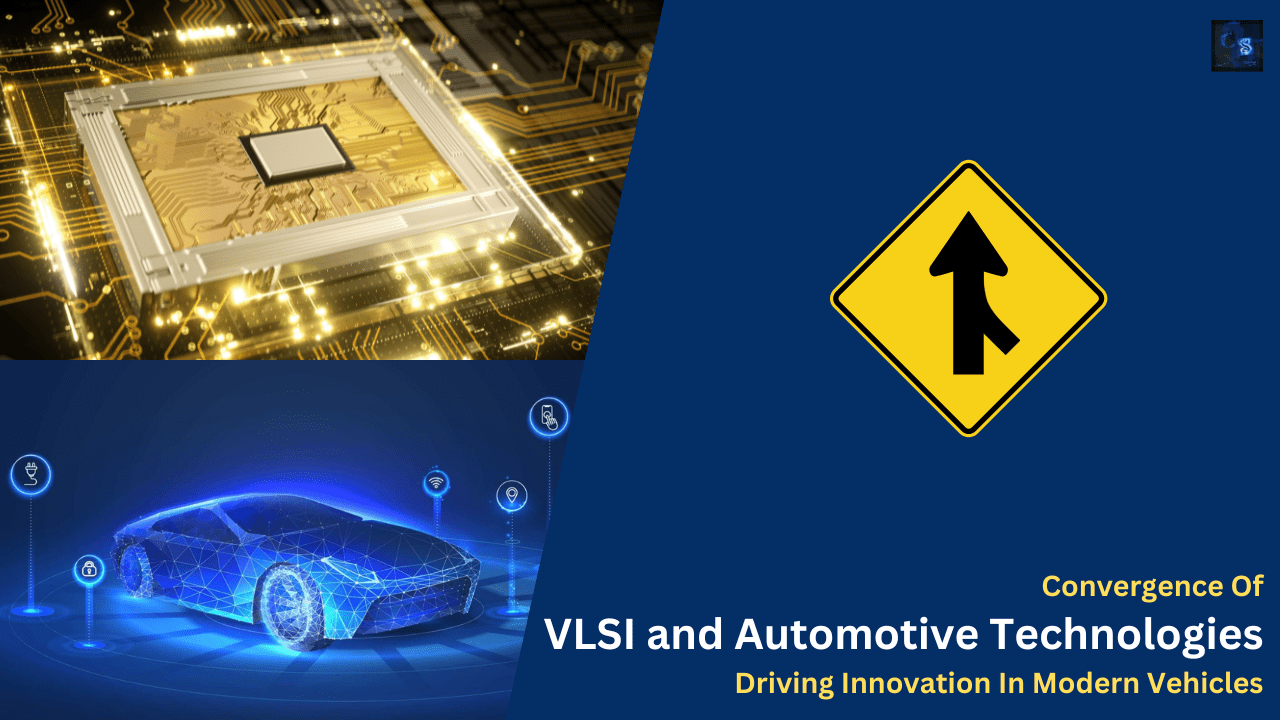Convergence Of VLSI and Automotive Technologies: Driving Innovation In Modern Vehicles
Hello guys, welcome back to our blog. Here in this article, I will be discussing on convergence of VLSI and Automotive technologies, and with brief explanation on each technology.
Ask questions if you have any electrical, electronics, or computer science doubts. You can also catch me on Instagram – CS Electrical & Electronics
- FuSa Functional Safety ISO26262 Interview Questions Asked In Benz, Daimler, Volvo, Qualcomm, Bosch, Automotive Companies
- Why Vector CANoe Is Most Popular in the Automotive Industry
- MATLAB M Scripting Interview Questions And Tutorial
Convergence Of VLSI and Automotive Technologies
The rapid evolution of the automotive industry has been significantly influenced by advancements in large-scale integration (VLSI) technology. Modern vehicles are increasingly reliant on semiconductor innovations to enhance safety, efficiency, and automation. From artificial intelligence (AI)-driven chips to energy-efficient power management solutions, VLSI technology is at the core of this transformation. This article explores the latest technologies bridging the gap between VLSI and automotive industries and their impact on future mobility solutions.

01. Standardization of Automotive Chips
The automotive industry is shifting toward chipset-based designs to enhance the scalability and performance of vehicle processors. Bosch, in collaboration with Tenstorrent, is developing standardized automotive chip architectures that enable faster production cycles and cost-effective solutions for various vehicle types. This modular approach allows manufacturers to tailor processors to different applications, from infotainment to autonomous driving.
02. Advanced Driver Assistance Systems (ADAS)
ADAS relies heavily on VLSI-based microprocessors and AI accelerators for real-time data processing. These systems integrate various sensors, including cameras, radar, and LiDAR, to assist drivers with lane-keeping, adaptive cruise control, and emergency braking. The computational efficiency of VLSI chips ensures that these safety features operate with minimal latency, reducing the likelihood of accidents.
03. AI-Powered Semiconductors for Autonomous Driving
Autonomous vehicles demand real-time data fusion from multiple sources, including high-resolution cameras, radar, and ultrasonic sensors. AI-optimized VLSI chips facilitate the complex decision-making processes required for autonomous navigation, obstacle detection, and predictive analytics. Companies like NVIDIA and Intel are leading this domain with powerful automotive-grade processors capable of handling deep-learning workloads efficiently.
04. Electric Vehicle (EV) Efficiency Enhancements
Electric vehicles (EVs) are benefiting from high-performance VLSI chips that optimize power conversion, battery management, and energy efficiency. ON Semiconductor’s partnership with Volkswagen exemplifies how silicon carbide (SiC) microchips improve EV energy consumption, allowing vehicles to achieve longer ranges without increasing battery size. These chips also enhance regenerative braking efficiency, contributing to overall sustainability.
05. Automotive AI Chips
AI-powered VLSI chips are revolutionizing vehicle control systems, from in-car voice assistants to real-time sensor fusion for driver monitoring. Companies like Tenstorrent and BOS Semiconductors have introduced AI accelerators specifically designed for automotive applications. These innovations enable adaptive infotainment systems, personalized driver settings, and enhanced cybersecurity measures.
06. Vehicle-to-Everything (V2X) Communication
VLSI advancements are making Vehicle-to-Everything (V2X) communication more efficient, allowing real-time data exchange between vehicles, infrastructure, and pedestrians. This technology enhances traffic management, reduces congestion, and improves road safety by enabling connected vehicle ecosystems. Low-power VLSI chips ensure seamless communication while maintaining energy efficiency.
07. Battery Management Systems (BMS) in EVs
Battery performance is critical for electric vehicles, and VLSI technology plays a crucial role in BMS development. Advanced microcontrollers with embedded power management algorithms help monitor cell voltages, temperature, and charge levels, ensuring optimal performance and longevity. These systems prevent battery overheating and improve charging efficiency, addressing key challenges in EV adoption.
08. Infotainment and In-Vehicle Connectivity
Modern automotive infotainment systems rely on high-performance VLSI chips to deliver seamless multimedia experiences. These chips support features like high-definition displays, voice recognition, and wireless connectivity, enhancing the user experience. Real-time processing capabilities ensure smooth operation of navigation, entertainment, and telematics services.
09. Neuromorphic Computing in Automotive AI
Neuromorphic computing mimics the human brain’s neural networks to enable real-time AI decision-making in vehicles. VLSI-based neuromorphic processors are emerging as a viable solution for ultra-low-power AI inference, helping autonomous systems make split-second driving decisions with minimal energy consumption.
10. Secure VLSI for Automotive Cybersecurity
As vehicles become more connected, cybersecurity is a growing concern. VLSI technology is driving the development of secure automotive microcontrollers with embedded encryption and intrusion detection mechanisms. These security-enhanced chips protect against hacking attempts and unauthorized access to vehicle control systems.
11. FPGA-Based Prototyping in Vehicle Electronics
Field-Programmable Gate Arrays (FPGAs) play a crucial role in prototyping and validating automotive electronics before mass production. These programmable logic devices allow automotive engineers to test new functionalities and refine designs in real-time. The flexibility of FPGA-based VLSI solutions accelerates the development cycle of innovative automotive technologies.
12. Next-Gen Semiconductor Materials for Automotive Chips
Beyond silicon, new semiconductor materials like gallium nitride (GaN) and silicon carbide (SiC) are revolutionizing automotive chip performance. These materials offer higher efficiency, better thermal management, and increased durability, making them ideal for high-voltage automotive applications such as electric drivetrains and fast-charging systems.
13. High-Performance Computing (HPC) in Autonomous Vehicles
Autonomous vehicles require immense computational power for real-time decision-making, sensor fusion, and deep learning applications. HPC architectures powered by VLSI-based multi-core processors enable these vehicles to process vast amounts of data quickly and accurately, paving the way for Level 4 and Level 5 autonomy.
Conclusion
The convergence of VLSI technology and automotive innovations is shaping the future of transportation. From AI-driven autonomous systems to efficient EV power management, VLSI plays a crucial role in advancing modern vehicle capabilities. As semiconductor research continues to push technological boundaries, the automotive industry will witness unprecedented levels of intelligence, safety, and efficiency in next-generation vehicles.
This was about “Convergence Of VLSI and Automotive Technologies: Driving Innovation In Modern Vehicles”. Thank you for reading.
Also, read:
- 100 (AI) Artificial Intelligence Applications In The Automotive Industry
- 2024 Is About To End, Let’s Recall Electric Vehicles Launched In 2024
- 50 Advanced Level Interview Questions On CAPL Scripting
- 7 Ways EV Batteries Stay Safe From Thermal Runaway
- 8 Reasons Why EVs Can’t Fully Replace ICE Vehicles in India
- A Complete Guide To FlexRay Automotive Protocol
- Adaptive AUTOSAR Vs Classic AUTOSAR: Which One For Future Vehicles?
- Advanced Driver Assistance Systems (ADAS): How To Become An Expert In This Growing Field

